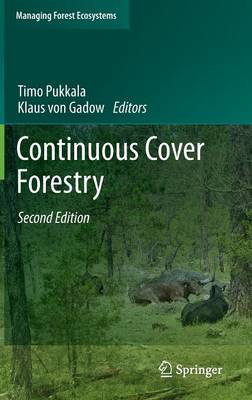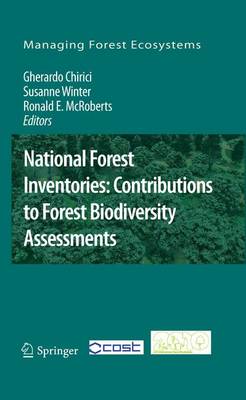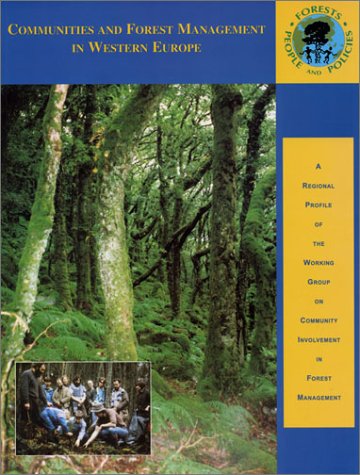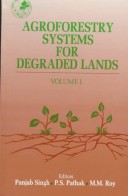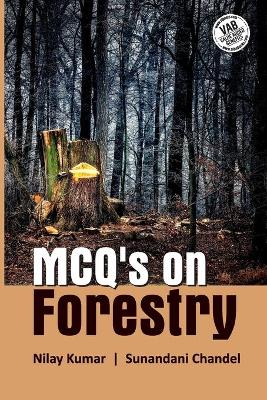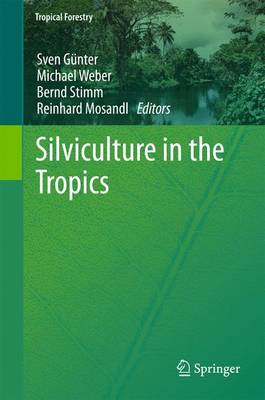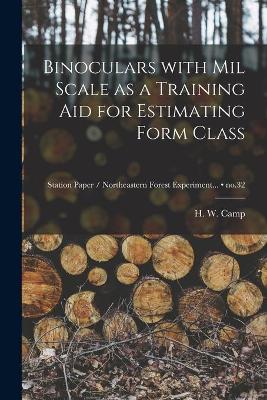Continuous Cover Forestry (Managing Forest Ecosystems, #23)
Although the majority of the world’s forest ecosystems are dominated by uneven-sized multi-species stands, forest management practice and theory has focused on the development of plantation monocultures to maximize the supply of timber at low cost. Societal expectations are changing, however, and uneven-aged multi-species ecosystems, selectively managed as Continuous Cover Forestry (CCF), are often believed to be superior to monocultures in addressing a wide range of expectations. This book pres...
Climate Change and World Food Security (Nato ASI Subseries I:, #37) (NATO ASI, v. 37)
In the last half decade since sustainable development became a serious objective, what have we achieved? Are livelihoods more secure? Are nations wealthier and more resilient? Is environmental quality being restored or maintained? These are essential questions of development. Their answers are many, varied between communities and regions, even between individuals. Two years ago, in the aftermath of the Earth Summit and ratification of the Framework Convention on Climate Change, but before the fi...
Forest biodiversity is crucial to the ecological, economic, and social well-being of earth’s civilisations. Unfortunately, however, forest biodiversity is threatened to a serious degree in nearly all countries. Therefore, many countries have agreed to be parties to international agreements focused on maintaining, restoring, and monitoring biodiversity; further, these countries have agreed to report to international bodies on forest biodiversity status and trends. NFIs are the primary source of l...
Introduction to Forest and Shade Tree Insects
by Pedro Barbosa and Michael R. Wagner
Forest Island Dynamics in Man-Dominated Landscapes (Ecological Studies, #41)
by R. F. Whitcomb
by the authors. This beach-head is only one of several which have recently been made in landscape ecology, striving to invade and occupy a fairly new territory on the map of science. This volume's editors and collaborators made another landing in analysis of space-time patterns of forest islands. Their contribution to the First International Conference on Landscape Ecology (3) and some related analyses (4, 5, 6, 7, 8) expressed the amount of area of a given landscape type as a function of rates...
An Ecological Site Classification for Forestry in Great Britain (Bulletin (FCBU), #124)
by Duncan Ray
Tropical Forests: Management and Ecology (Ecological Studies, #112)
Forestry professors used to remind students that, whereas physicians bury their mistakes, foresters die before theirs are noticed. But good institutions live longer than the scientists who contribute to building them, and the half-century of work of the USDA Forest Service's Institute of Tropical Forestry (ITF) is in plain view: an unprecedented corpus of accomplishments that would instill pride in any organization. There is scarcely anyone interested in current issues of tropical forestry who w...
Die Weiden Von Mittel- Und Nordeuropa
by Dagmar Lautenschlager-Fleury and Ernst Lautenschlager-Fleury
Agroforestry Systems for Degraded Lands
by Punjab Singh, P.S. Pathak, and M.M. Roy
Biological Resource Management Connecting Science and Policy
Jointly published with INRA, Paris. The application of new production methods in the food industry - genetic engineering in plants and animals - as well as recent crises over food-borne diseases have led consumers to a growing concern about science as an appropriate basis for developing sound agricultural policies. This book presents the discussion of scientists and politicians in the framework of an OECD programme conference on how to restore public trust in the application of new scientific a...
This new, well-illustrated text describes in detail all aspects of wildland firefighting. Written in a clear, "how to" style by a seasoned fire officer, it provides a comprehensive explanation of all the skills a firefighter needs to operate effectively against any type of wildland blaze. Step-by-step photographs of actual operations make it easy for the student to understand the material; illustrations and graphs reinforce the learning process. This text leaves students with a complete understa...
Foxes and Forestry (Forestry Commission Research Note (FCRN))
by A. H. Chadwick
Cutting Practice Demonstrations in Upland Hardwoods; no.162
by William T Plass and John W Greth
Silviculture in the Tropics (Tropical Forestry, #8)
This book integrates the latest global developments in forestry science and practice and their relevance for the sustainable management of tropical forests. The influence of social dimensions on the development of silvicultural concepts is another spotlight. Ecology and silvicultural options form all tropical continents, and forest formations from dry to moist forests and from lowland to mountain forests are covered. Review chapters which guide readers through this complex subject integrate nume...
Political Agroecology (Advances in Agroecology)
by Manuel Gonzalez de Molina, Paulo Frederico Petersen, Francisco Garrido Pena, and Francisco Roberto Caporal
Political Agroecology is the first book to offer a systematic and articulated reflection on Political Agroecology from the Agroecological perspective. It defines the disciplinary field responsible for designing and producing actions, institutions and regulations aimed at achieving agrarian sustainability. In short, it aims to build a political theory that makes the scaling-up of agroecological experiences possible, turning them into the foundation of a new and alternative food regime. The book...
Binoculars With Mil Scale as a Training Aid for Estimating Form Class; no.32
You Are The Best Foreman All The Other Foremen Are Fake News. Everyone Agrees. Believe Me.
by Rocket Publishing
Field Guide to the Canadian Forest Fire Behavior Prediction (Fbp) System, Second Edition
by S W Taylor and M E Alexander
The Canadian Forest Fire Behavior Prediction (FBP) System is a systematic method for assessing wildland fire behavior potential. This field guide provides a simplified version of the system, presented in tabular format. It was prepared to assist field staff in making first approximations of FBP System outputs when computer-based applications are not available. Quantitative estimates of head fire spread rate, fire intensity, type of fire, and spread distance, elliptical fire area, perimeter, and...

